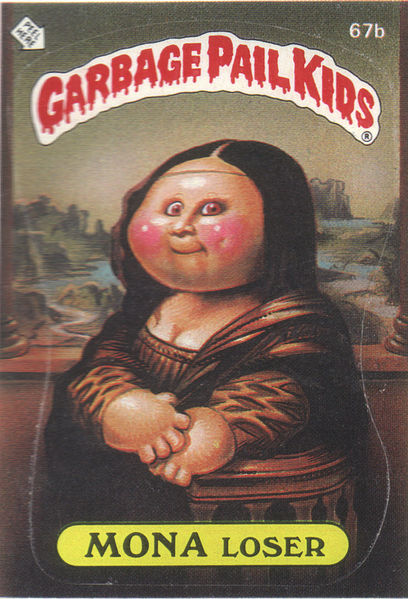
(photo by efigment)
Race to the Top winners for round two were announced on August 24th by the U.S. Department of Education. The ten winners were Florida, Georgia, Hawaii, Maryland, Massachusetts, New York, North Carolina, Ohio, Rhode Island and Washington, D.C.
There were many more surprises on Aug. 24th than in the announcement of finalists on July 27th. For those who worked from round-one scores to predict round-two finalists, as I did, it wasn't hard to seem prescient. The only real surprise in the announcement of round-two finalists was that Arizona, California and Hawaii had made the cut. (They had fared poorly enough in round one - all finishing outside the top 20 -- that it seemed they had little chance in round two. But Arizona woke up from the dead, and California -- perhaps because of extra encouragement from Education Secretary Arne Duncan -- didn't give up despite its failure to secure teacher-union support.)
Now the biggest surprise isn't just that Hawaii won, securing for itself $75 million, but that it finished a very respectable third overall. In round one, Hawaii finished a distant 22nd, its application garnering only 364.6 points out of 500. Its second-round application was given 462.4 points, which was the biggest improvement by far of any winning state.
Secretary Duncan said Hawaii's extraordinary jump was a result of the fact that its first-round application was incomplete, so its low score didn't reflect its true potential. In her May 27th cover letter to Secretary Duncan, Hawaii Gov. Linda Lingle pointed out that "Hawaii is in a unique position to demonstrate that the reforms embodied in ARRA and the education agenda of President Obama's Administration can be implemented statewide" because the Aloha State is alone among its peers in having a single state-wide school district. Whether this argument helped sway Duncan or Race to the Top reviewers is difficult to know, but it was one of many new aspects to Hawaii's round-two application.
A few other thoughts on Hawaii: its second-round application was nearly twice as long as its first-round application, and it's the only state west of the Mississippi River to have won. A number of reporters who asked questions of Duncan on Aug. 24th noted that the winners tended to be "urban" states -- and, with the exceptions of Hawaii and Ohio, located on the Eastern seaboard. Duncan replied by saying that "geography was irrelevant" in the judging process.
The other major surprises of the Aug. 24th announcement, as I see them, were: 1) that New York finished in second place overall, having come in 15th in the first round; 2) that Arizona almost made the cut, pulling off a spectacular comeback from 40th in the first round to 12th in the second; 3) that the applications of five states -- Alabama, Arkansas, Kentucky, Pennsylvania and Utah -- received fewer points than their first-round applications did; and 4) that Colorado, Illinois, Pennsylvania and South Carolina somehow didn't get a piece of the $3.4-billion pie.
Now, a few words about Race to the Top's big losers -- Illinois, South Carolina and Pennsylvania, which seemed well-positioned to win in round two based on their strong performances in round one. (They finished 5th, 6th and 7th, respectively, in the first round.) How and why they fell an average of 10 spots in the rankings between rounds one and two is mostly a mystery. Those interested in unraveling the mystery, if they have lots of spare time and energy, can do so by parsing the detailed scores and reviewers' comments, released on Aug. 25th.
Colorado and Louisiana were also on many people's lists of likely winners for round two. What happened to them? Between the two rounds they slipped a few spots in the rankings, but it's unclear why. Rick Hess of the American Enterprise Institute expressed dismay at the exclusion of Colorado and Louisiana from the winners' circle. He told the New York Times, "Colorado passed the single most important piece of education legislation of any state, changing their system for teacher evaluations and tenure. And Louisiana has carried out some of the nation's most amazing reform efforts, including making New Orleans a laboratory for charter schools." These changes appear not to have been enough.
But the biggest losers of all might well be New Jersey and Arizona, which ranked 11th and 12th, respectively, in round two. They finished fewer than six points off Ohio, the 10th and final state to win money. New Jersey, a mere three points behind Ohio, is no doubt thinking about all of the tweaks it could have made to its application in an effort to win $400 million. The (Newark) Star-Ledger has pointed out that New Jersey lost five points on its application simply for submitting budget information for the wrong year. Those five points could have propelled the Garden State past the Buckeye State, meaning $400 million would have flowed not to LeBron James' stomping grounds but instead to the birthplace of Jersey Shore.
Finally, even though Arizona lost, I think it should get some kind of consolation prize -- say, a "most-improved" award from Secretary Duncan for having raised its score from 240.2 points in round one to 435.4 points in round two. This improvement, of nearly 200 points, dwarfs Hawaii's already-impressive improvement of almost 100 points. But it didn't win Arizona any money.
My suggestion? Duncan is "only" doling out $3.325 billion of the $3.4 billion allocated for round-two winners -- so why not give Arizona the leftover $75 million as a consolation prize? The biggest losers deserve to be winners, too.
